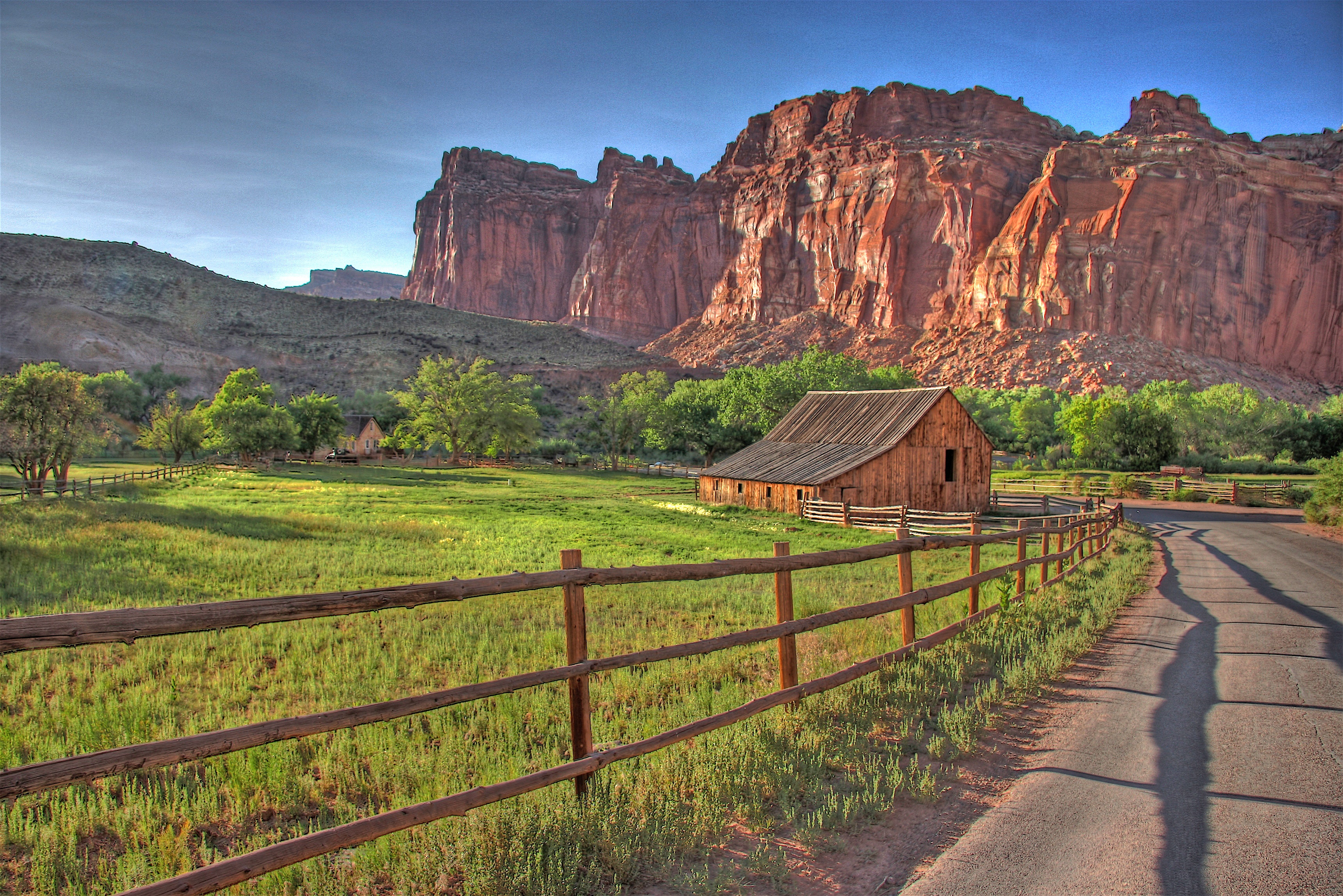- City:
- Torrey, UT
- Site Type:
- Parks and Recreation, Infrastructure and Utilities, Roads, Bridges, and Tunnels
- New Deal Agencies:
- Work Relief Programs, Civilian Conservation Corps (CCC)
- Quality of Information:
- Moderate
- Marked:
- No
Description
Preservation of Capital Reef began with the declaration of Capitol Reef National Monument on August 2, 1937, via Proclamation 2246 signed by President Franklin Roosevelt. The original area set aside was only 37,711 acres. Administration of the new monument was placed under the control of Zion National Park and the National Park Service, but Capitol Reef National Monument did not officially open to the public until 1950. It became a National Park in 1971, under President Richard Nixon, with a much expanded area of 241,000 acres. The park is 100 miles long but narrow, running north to south, in south-central Utah. It lies to the east of Escalante National Monument and to the west of Canyonlands National Park.
The first improvements to Capitol Reef were made by the Civilian Conservation Corps (CCC), which established Camp NM-2, later called NP-6, located to the west of Fruita at Chimney Rock. The Fruita ranger station and a powder magazine built by the CCC still stand. Later, the Sulphur Creek bridge and some road work were done by the Works Progress Administration (WPA).
The CCC Powder Magazine built into a hillside is on the National Register of Historic Places. It was used to store explosives for construction of improvements to the park, since much of the CCC’s work involved quarrying sandstone blocks and slabs, which required explosives. The walls are native red sandstone, coursed, with a stone slab for a roof.
Source notes
Discussion with a Park Ranger https://en.wikipedia.org/wiki/Civilian_Conservation_Corps_Powder_Magazine https://en.wikipedia.org/wiki/Capitol_Reef_National_ParkSite originally submitted by Carl Berger on June 16, 2013.
Contribute to this Site
We welcome contributions of additional information on any New Deal site.
Submit More Information or Photographs for this New Deal Site

Join the Conversation